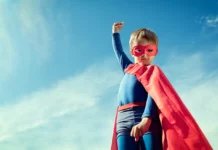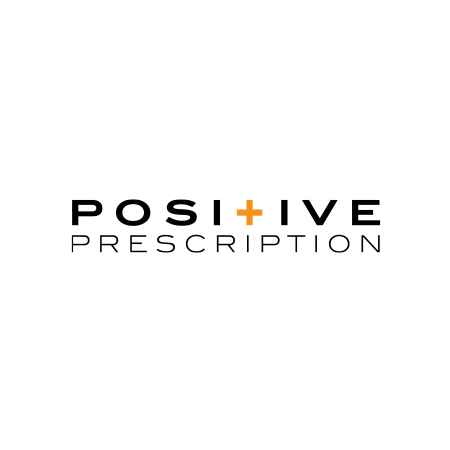Sarah prides herself on being realistic. “Look, I’m clear eyed about how the world works. It’s a dangerous place filled with dangerous people.” She plans for worst-case scenarios and assumes people will always take advantage of her. Sarah is convinced that her realism is protecting her from being ill-prepared and considers herself a realist in a world full of naive optimists.
Sarah’s perspective illustrates something I increasingly see in my practice: people who believe their pessimism is protecting when it’s actually imprisoning them. What they call “being realistic” has become a form of cognitive self-sabotage. It’s making them miserable and, paradoxically, less prepared for actual challenges.
All too often, outright pessimism is wearing a cloak of realism. But there is nothing realistic about defeatism and hopelessness. If anything it’s an on-ramp for depression and anxiety. Plus, emerging research suggests that those “naive optimists” might actually be the ones who are better equipped to handle whatever comes their way.
Your Beliefs Are Writing Your Story
Psychologist Jeremy Clifton at the University of Pennsylvania has spent years studying what he calls “primal world beliefs” — our deepest assumptions about whether the world is fundamentally safe or dangerous, meaningful or meaningless, abundant or scarce. His research reveals that these beliefs don’t just reflect our experiences; they actively create them.
Clifton and his team discovered that our most basic assumptions about reality—whether life is generally safe or dangerous, whether people are trustworthy or suspicious, whether the future holds promise or peril—function like invisible software running in the background of our minds.
Consider two people stuck in the same traffic jam. The first thinks, “This is typical. Nothing ever goes smoothly.” The second thinks, “This gives me time to listen to that podcast I’ve been meaning to catch up on.” Same situation, completely different internal experience, and ultimately, different outcomes for their day.
Clifton’s research shows systematic patterns in how we fundamentally view the way the world works. And here’s the kicker: people who believe the world is generally safe, meaningful, and full of possibilities don’t just feel better. They actually perform better, innovate more, and build stronger relationships.
How Your Brain Creates Your Reality
Clifton’s work builds on research showing that our expectations literally shape our neural responses. When Sarah assumes something will go wrong, her brain activates threat-detection systems that make her hypervigilant to problems while filtering out evidence that things might work out fine.
It’s not just theoretical. Brain imaging studies show that people with more positive primal beliefs, or those who see the world as generally safe and meaningful, have greater activity in regions associated with approach behaviors and creative problem-solving. Meanwhile, those who view the world as threatening show chronic activation in areas linked to stress and avoidance.
Assumptions don’t just color how we interpret events; they actively shape what we notice, remember, and expect. Someone who fundamentally believes the world is deteriorating will unconsciously seek out evidence of decline. Someone who believes it’s improving will notice progress and possibility.
Put simply, Sarah’s “realistic” preparation for problems isn’t making her more effective. It’s training her brain to expect and create even more problems.
Why Catastrophizing Became Cool
Visit many classrooms today and you’ll notice a troubling pattern: young people are learning about the world’s problems without equal emphasis on humanity’s capacity to solve them.
Students study climate change before they learn about the innovations addressing it. They focus on historical injustices before they explore human progress. They’re taught to identify systemic problems before they develop skills to create solutions.
Somewhere along the way, catastrophizing became culturally fashionable. Being the person who points out everything that could go wrong is now seen as being “aware” or “informed.” Meanwhile, those who focus on solutions or express optimism about the future are often dismissed as naive or privileged.
This cultural shift has turned pessimism into a virtue and optimism into a character flaw. We’ve created a social environment where doom-saying signals intelligence and hope-mongering suggests ignorance.
We tell ourselves this is “preparing our children for reality.” But what if we’re actually preparing them for depression?
The statistics are sobering: rates of anxiety and hopelessness among teenagers have skyrocketed over the past decade, even as many objective measures of human wellbeing have improved. Could there be a connection between how we’re framing the world and how young people are responding to it?
Shift Your Perspective
By changing the questions you ask yourself and the stories you tell, you can train your brain to focus less on problems and more on possibilities. Strategic optimism isn’t about pretending problems don’t exist. It’s about approaching them from a position of agency rather than helplessness.
These five mindset shifts are simple but powerful ways to reframe your thinking:
1. Start With Possibility, Not Problems
Instead of starting conversations with problems, start with potential. Yes, acknowledge challenges, but immediately pivot to exploring options. Your brain will follow your questions.
“What’s wrong?” → “What’s possible?”
This shift primes your mind to search for openings instead of obstacles.
2. Treat Setbacks as Information, Not Evidence of Decline
When facing setbacks, resist the urge to see them as evidence of decline. Instead, treat them as data points that can inform better strategies.
“This always happens to me.” → “This is new information that will help me improve my approach.”
Each challenge becomes a stepping stone when you view it as data, not destiny.
3. Build Capacity Instead of Preparing for Catastrophe
Stop rehearsing worst-case scenarios as if fear equals preparation.
“I need to prepare for the worst.” → “I need to build capacity for whatever comes.”
The goal isn’t to predict specific outcomes. It’s to develop the skills, relationships, and resilience to handle uncertainty effectively.
4. Move Conversations Forward with “Yes, and…”
When a concern shows up in your mind or in conversation, acknowledge it but don’t stop there.
“This is a problem.” → “Yes, this is challenging, and what might be possible here?”
This approach keeps your thinking flexible, future-focused, and solutions-oriented.
5. Collect Evidence of What’s Working
Train your brain to notice progress, not just problems. Each week, be deliberate about spotting moments that went better than expected.
“Nothing ever goes right.” → “There’s more going right than I’m noticing.”
Over time, your brain learns that positive outcomes are normal, not rare exceptions.
The Ripple Effect
When you shift your worldview from scarcity to possibility, something remarkable happens: not only do you feel better, you become a source of energy and innovation for others.
Your children stop seeing the future as something to fear and start seeing it as something to create. Your colleagues approach challenges with curiosity rather than dread. Your friends gravitate toward you during difficult times because you help them remember what’s possible.
This isn’t about being unrealistic; it’s about being strategically realistic. It’s acknowledging that humans have remarkable capacity for adaptation, that creative solutions exist for most problems, and that we have more power to shape our future than we often realize.
The Choice We All Face
As Sarah is beginning to realize, every day, we’re making a choice about what kind of world we’re creating; not just for ourselves, but for everyone around us.
We can focus on everything that’s broken and train our brains to expect more breakdown. Or we can acknowledge problems while maintaining unshakeable faith in human capacity to address them.
The research is clear: people who choose the second path don’t just feel better—they perform better, innovate more, and contribute more to actually solving the problems we all care about.
Every conversation you have, every story you tell, every reaction you have to challenges are votes for the kind of world you want to live in. When you choose hope over despair, and possibility over paralysis, you’re not just helping yourself. You’re creating the conditions for others to thrive too.
I wish you all the best,
Dr. Samantha Boardman






